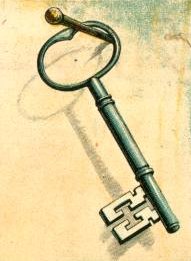Okay, so you have all your research done. You have pages of notes from your SME. You have input from relevant stakeholders. You’ve tossed the idea around to anyone and everyone who could possibly create a problem.
Team is on board. Client is on board. Designer is on board.
You’re ready. You’re set. It’s time to GO!
Your fingers fly. You and the keyboard are one. This is it. This is how it feels to have the metaphoric ADDIE winds blow through your hair.
It’s all coming so easily. The intro. The text. The activities. The conclusion. Magic.
This is the one. This is the mix of policy and prose that’ll earn you the Nobel Prize for e-learning. Picture it: sitting in Sweden with that medal around your neck, eating…um…whatever they serve in Sweden, while talking instructional design with the greatest minds on the planet.
Your masterpiece script is completed. Sit back now. Take a swig of that free soda they have in the break room (if you are fortunate enough to work for a company that has the vision to understand that freebies like this can improve morale).
Drink it all in. Bask in the glow of a job well done….
Now, cut out about a quarter of what you’ve written. Aw, shucks. Let’s be bold and cut about a third.
Now, take a little more off the edges. Don’t worry, you can redline it and add it back in later if you absolutely must.
You see, editing isn’t just for the e-learning world. Editing is for your stories, articles, lectures, in-person trainings, PowerPoint presentations, spreadsheets, office visits with managers, and pretty much everything else in the universe.
According to a very interesting (and a little scary) website, statisticbrain.com, the average human attention span in 2015 is 8.25 seconds. To put that in perspective, a goldfish has an attention span of 9 seconds. That means that a goldfish will pay more attention to your 10 second passage on bribery than the average human.
You’d better hope the most important points about bribery come in the first 8.24 seconds.
For those of you who write scripts, take time after the first draft to dig in and edit. I emphasize this in the Quick Key series, because I know how important this is. See where you can shrink things down. Lead sections with your most important information. Along the way, use graphics and interactive scenarios instead of script-speak to get people refocused. Tell folks why they should care. Give them real-world consequences early. Keep people invested.
In my last fiction manuscript, I spent a few months writing the first draft, then close to a year (or more?) putting the thing through 15 additional drafts. Each time it got tighter and tighter. When I look back at that first draft now, I am amazed at all the word splatter I created in the first go.
Unlike this post, shorter is usually better. Learn to not get so attached to your writing that you forget that your masterpiece and your audience may not agree.
Oh, and keep in mind that in Sweden, they have a national coffee break called the fika. So, if you plan on winning the Nobel Prize for e-learning, you may want to create a course with a short run time so people don’t miss that.
Just some extra incentive for you.
How do you cut and trim your e-learning scripts?
